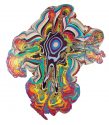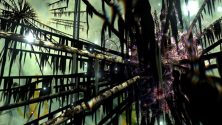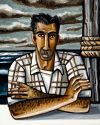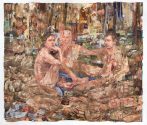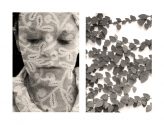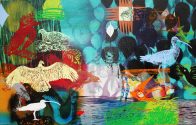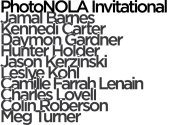Holton Rower
The paintings in Holton Rower's "Love Heals" compose an amazingly vibrant exhibition of works with incredible color combinations that can be stunningly psychedelic and completely hypnotic. The artist creates the paintings with a simple yet incredibly beautiful process that is carried out with variations in technique that produce wildly different effects. Read More

